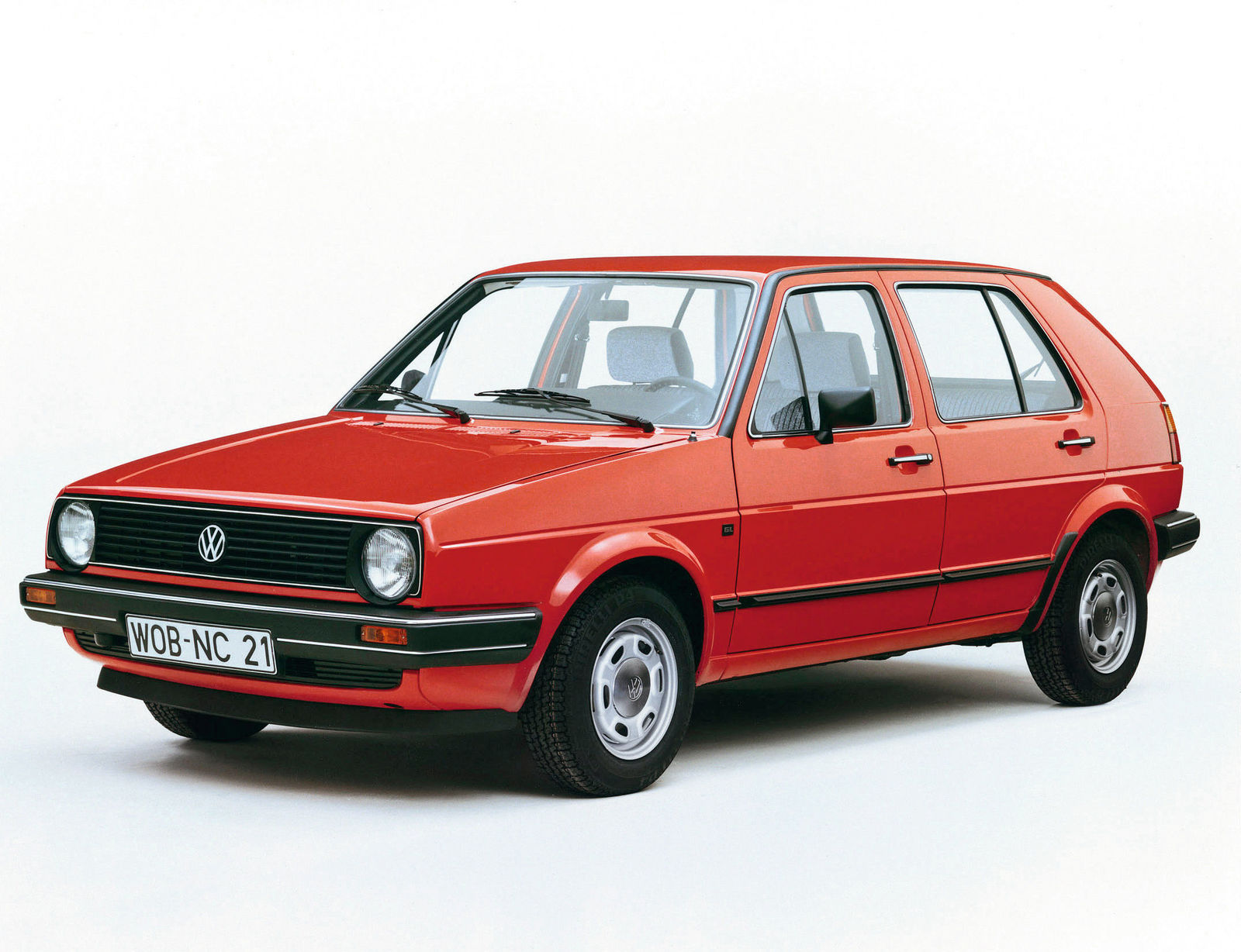It was the second generation Golf that was the Volkswagen in which the baby-boomer generation, people who are now in their fifties and sixties, learned to drive. While its predecessor had already become a favourite of all driving instructors and learner drivers, the second Golf had now become firmly and inerasably established in the minds of these temporary allies. As of August 1983, they no longer sat quite so close to each other, as that year's press kit pointed out: "The wheelbase is now 75 mm longer, while the track width at the front has been increased by 23 mm and at the back by 50 mm. Total length has increased by 170 mm (now 3.99 m) and the width by 55 mm (now 1.42 m)… The passenger space, measured between accelerator pedal and rear seat back, has increased by 37 mm to 1,837 mm, while elbow room in the front is now 92 mm wider and in the back is up by 112 mm. On the four-door model the increase is even 120 mm."
Another fact is: it was the Golf that introduced the regulated catalytic converter (1984), anti-lock braking system (ABS, 1986) and power-steering to the Golf class and which could be ordered with an all-wheel drive system for the first time (Syncro, 1986). And as far back as 1989 Volkswagen was already unveiling a prototype of this Golf with an electric drive system and another with a hybrid drive system. The United States in the meantime developed into a sort of parallel universe – one for vehicles with notchback. In 1985 Volkswagen responded by sending the Jetta, a sister model of the Golf designed as a saloon car, to the United States. With success: in the years to come, this Volkswagen was to be the most successful car of a German producer on the American market.
In June 1988, 14 years after its debut, the Golf had also surpassed the magical production milestone of 10 million vehicles. Including all derivatives, a total of 6.3 million second generation units were produced by the summer of 1991 – that is, 0.79 million Golf cars annually.
The Golf II design
The most important moment in the history of the Golf in the late 70s was actually a decision taken by the board members to take the Golf I design further, and to design the Golf II on the basis of its visual DNA. That's how Volkswagen created a basis for the continuous development of the series." The age of the second Golf began in 1983. Germany was thrilled when Ulf Merbold was catapulted into space on the "Columbia" that year. Meanwhile, Michel Jackson's album "Thriller" reached previously unimagined sales regions, and became the best-selling LP/CD of all time. Apple invented the "mouse" for computers. The CDU and Helmut Kohl were elected into government by the Germans, and the Greens become became the fourth party in Parliament. In China, the first Volkswagen rolls off the line – a Santana, the notchback version of the Passat. And in the autumn, the second-generation Golf was launched. Even though the new Golf was significantly larger, with more volume and fully family friendly, the drag coefficient was reduced from 0.42 to 0.34.
The designers managed to get this second Golf, the car of the "Generation Golf," that is, the baby boomers, who are in their 50s and 60s now, into such good shape that it stayed fresh into the 1990s. The Golf II had evolved. In terms of silhouette, it had stayed true to the Golf I, but the deep shoulder-line had turned into a distinctive corrugation. The stern underwent the most radical changes: the tail lights were located just above the bumper in the Golf I – a stylistic feature of the time. When the Golf II was launched nothing had changed in this way of integrating the tail lights. But what did the Volkswagen designers do? They put the tail lights from the very bottom to the very top! Result: the Golf II had an unmistakable look from behind too. What's more, due to the roof that was drawn-back again and the steep C-pillar, the Golf II offered much more interior space in the back than its competitors. Form follows function.
Another visual bridge between the first and second generation, however, was the front end: the radiator grill still carried round headlights that protruded downward from the grill. Insignificant? Not at all. Just as is the case with a human face, it is exactly such deviations from the norm that make a car truly unique. But it also means: evolution not revolution! The official Volkswagen statement from 1983 says in this regard: "After careful consideration, the decision was taken in Wolfsburg – the Golf must remain a Golf." Volkswagen continued: "That is, no new design deviating from the Golf concept – but nonetheless, a new car from bumper to bumper, according to the motto: continuity in concept, progress in detail and quality." The rest is history – see above!
